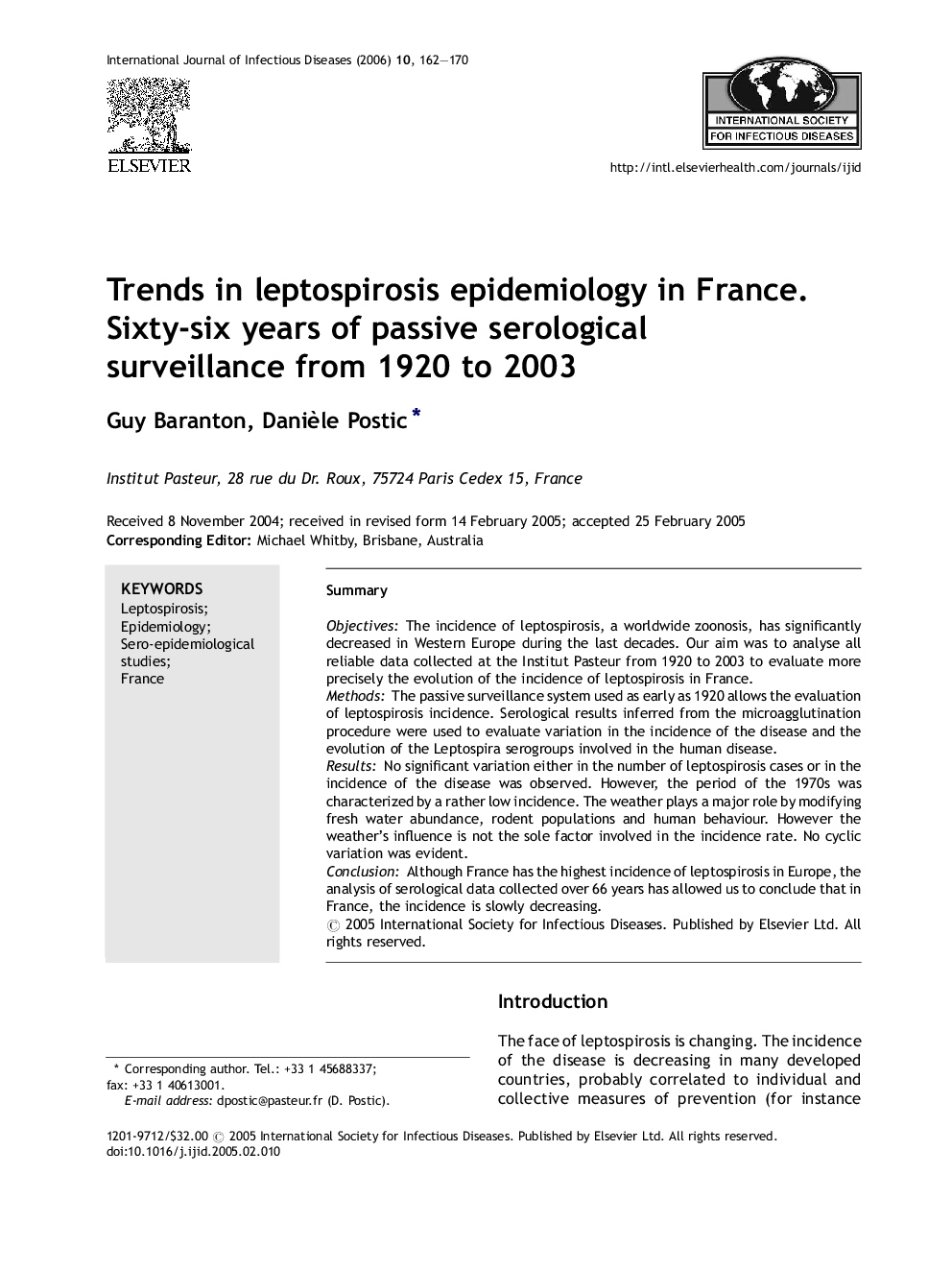| Article ID | Journal | Published Year | Pages | File Type |
|---|---|---|---|---|
| 3364664 | International Journal of Infectious Diseases | 2006 | 9 Pages |
SummaryObjectivesThe incidence of leptospirosis, a worldwide zoonosis, has significantly decreased in Western Europe during the last decades. Our aim was to analyse all reliable data collected at the Institut Pasteur from 1920 to 2003 to evaluate more precisely the evolution of the incidence of leptospirosis in France.MethodsThe passive surveillance system used as early as 1920 allows the evaluation of leptospirosis incidence. Serological results inferred from the microagglutination procedure were used to evaluate variation in the incidence of the disease and the evolution of the Leptospira serogroups involved in the human disease.ResultsNo significant variation either in the number of leptospirosis cases or in the incidence of the disease was observed. However, the period of the 1970s was characterized by a rather low incidence. The weather plays a major role by modifying fresh water abundance, rodent populations and human behaviour. However the weather's influence is not the sole factor involved in the incidence rate. No cyclic variation was evident.ConclusionAlthough France has the highest incidence of leptospirosis in Europe, the analysis of serological data collected over 66 years has allowed us to conclude that in France, the incidence is slowly decreasing.
